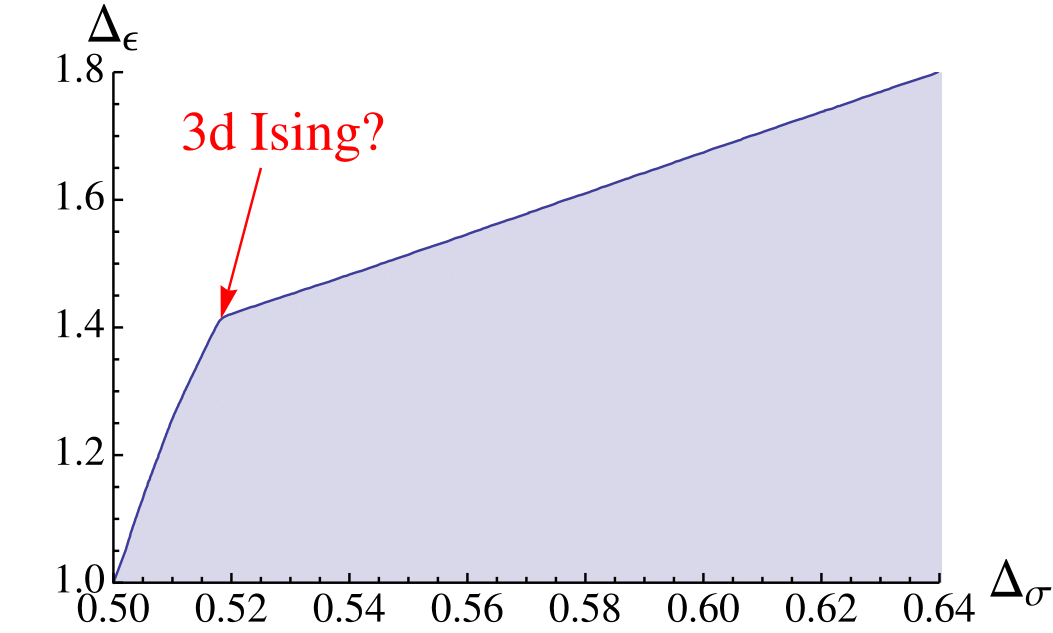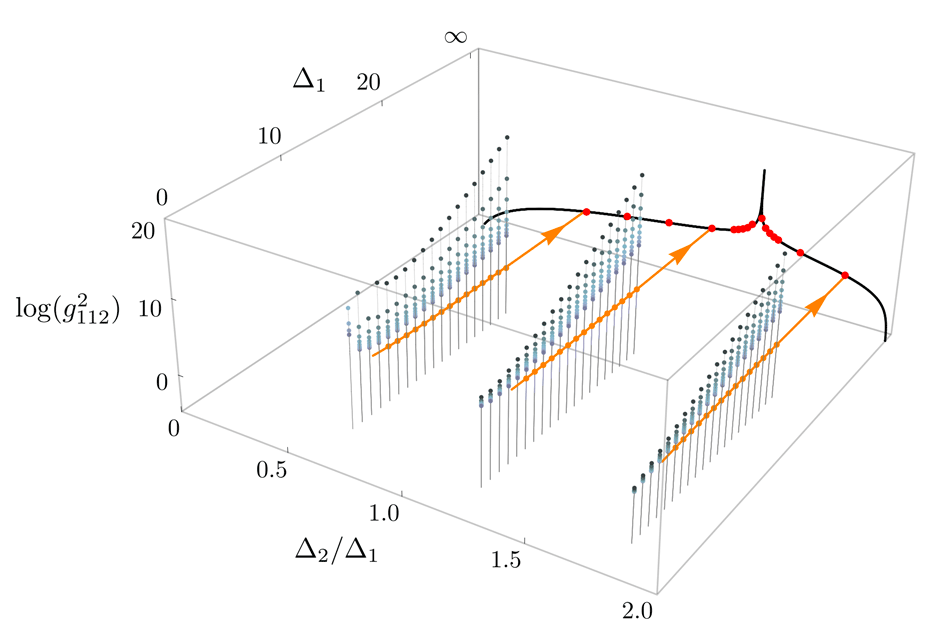The Problem of Strong Coupling
Quantum field theory (QFT) is a universal language for theoretical physics, describing the Standard Model of particle physics, early universe inflation, and condensed matter phenomena such as phase transitions, superconductors, and quantum Hall fluids. A triumph of 20th century physics was to understand weakly coupled QFTs. However, weakly interacting systems represent a tiny island in theory space and cannot capture many of the most interesting physical phenomena.
The critical challenge for the 21st century is to map and understand the whole space of QFTs, including strongly coupled models. This is the main goal of the Simons Collaboration on the Nonperturbative Bootstrap. Meeting this challenge requires new physical insight, new mathematics, and new computational tools. Our starting point is the astonishing discovery that the space of QFTs can be determined by using only general principles: symmetries and quantum mechanics. By analyzing the full implications of these general principles, one can make sharp predictions for physical observables without resorting to approximations. This strategy is called the bootstrap.
History of the Bootstrap
The bootstrap idea has its roots in the S-matrix approach to the strong nuclear force, popular in the 1960's but largely abandoned after the advent of Quantum Chromodynamics. The idea that general principles uniquely fix the dynamics of QFT reappeared in the 1970's and 1980's with the formulation of the conformal bootstrap, an infinite set of consistency relations for conformal field theories (CFTs). At the time, these bootstrap equations were applied with great success to rational CFTs, a special class of two-dimensional models with enhanced symmetry. However, little progress was made in d>2 dimensions, and for the next two decades the bootstrap remained quiescent.
Our Collaboration
Recently, members of our collaboration discovered new bootstrap techniques that apply in general dimensions. In the past few years we have applied these techniques to a wide variety of seemingly unrelated problems: to perform the world's most precise analysis of the 3d Ising model, to constrain strongly coupled theories of physics beyond the Standard Model, to aid in classifying superconformal field theories, to derive locality and black hole thermality in models of quantum gravity, and to prove irreversibility of renormalization group flows. We believe this is the beginning of a much larger enterprise, crossing traditional boundaries between string theory, condensed matter physics, and phenomenology, and making strong connections to modern mathematics and computer science.



Outreach articles
Articles on our research for a broader audience.
-
The conformal bootstrap
by David Poland and David Simmons-Duffin (Nature Physics, June 2, 2016)
-
Physicists Uncover Geometric "Theory Space"
by Natalie Wolchover (Quanta magazine, February 23, 2017)
-
Magnets, boiling kettles and the secret code underlying reality
by Gabriel Popkin (New Scientist, February 15, 2017)
-
The Bootstrap: Building nature, from the bottom up
by Lauren Greenspan (Inside the Perimeter, December 15, 2017)
Simons Collaborations
Simons Collaborations, made possible by support from the Simons Foundation, bring together groups of outstanding scientists to address mathematical or theoretical topics of fundamental scientific importance in which a significant new development has created a novel area for exploration or provided a new direction for progress in an established field.
Mathematical and Physical Science Collaborations
- Algorithms and Geometry
- Arithmetic Geometry, Number Theory, and Computation
- Cracking the Glass Problem
- Hidden Symmetries and Fusion Energy
- Homological Mirror Symmetry
- It from Qubit
- Localization of Waves
- Many Electron Problem
- Simons Observatory
- Special Holonomy in Geometry, Analysis, and Physics
- Ultra-Quantum Matter
- Wave Turbulence